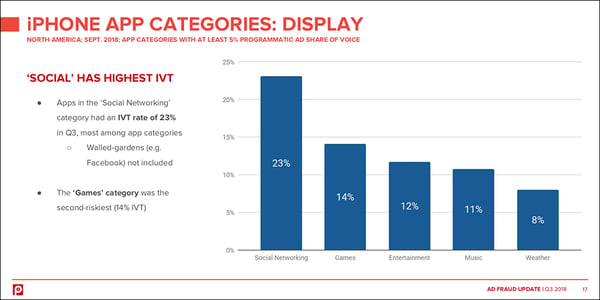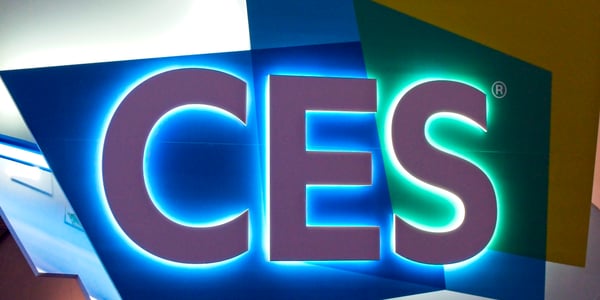
This week's review of ad fraud and quality in the digital advertising space.
There's still time to register for our expert panel on Monday, January 28 at 1pm EST: How to Succeed With High Quality OTT in 2019. Reserve your spot now!

Pixalate recently released the Q3 2018 Ad Fraud Report, and our data shows that social networks don’t just have a fake follower problem: They have an ad fraud problem, too.
Social Networking’s big ad fraud problem is not just costing advertisers millions of dollars. It’s also disrupting the promise of personalization, which is essential to almost every social-focused ad campaign.
Read the blog or download the report for more information.

AdExchanger, in partnership with MoPub, published an article detailing "how marketers can stay ahead of in-app IVT" in a mobile-first world. "[D]espite steady growth in this category over the last few years, the true return on investment for in-app advertising remains murky," the article reads. "Why? Mobile invalid traffic – particularly ad fraud – makes it hard to appropriately gauge how many real individuals are actually reached by the advertisements that marketers are paying for."

"Connected TV ad buying is becoming more TV-like," wrote Digiday. "In the latest sign of connected TV advertising’s maturation, advertisers have begun to count co-viewing — whether more than one person was in the room to see an ad on a single screen — as part of their connected TV campaigns."

RhythmOne has published a recap of CES 2019, noting that "unification" — specifically between tech and media — was a major theme. The company's CES 2019 event report also features a recap of an expert panel on the future of advanced TV, which featured Pixalate's Amy King, VP of product marketing.
"The great promise of programmatic is reaching individuals at scale, which is hard to do when cobbling together a series of direct buys," King said during the panel. "By adding OTT to the programmatic ecosystem, your ability to accurately reach your target audience increases … we haven’t seen the best of what’s to come in programmatic — but the volumes are increasing and delivery on the promise is getting stronger."
Sign up for our blog to stay updated with new stats, trends, and analysis of digital ad fraud.
*By entering your email address and clicking Subscribe, you are agreeing to our Terms of Use and Privacy Policy.
These Stories on Weekly Recaps
*By entering your email address and clicking Subscribe, you are agreeing to our Terms of Use and Privacy Policy.

Disclaimer: The content of this page reflects Pixalate’s opinions with respect to the factors that Pixalate believes can be useful to the digital media industry. Any proprietary data shared is grounded in Pixalate’s proprietary technology and analytics, which Pixalate is continuously evaluating and updating. Any references to outside sources should not be construed as endorsements. Pixalate’s opinions are just that - opinion, not facts or guarantees.
Per the MRC, “'Fraud' is not intended to represent fraud as defined in various laws, statutes and ordinances or as conventionally used in U.S. Court or other legal proceedings, but rather a custom definition strictly for advertising measurement purposes. Also per the MRC, “‘Invalid Traffic’ is defined generally as traffic that does not meet certain ad serving quality or completeness criteria, or otherwise does not represent legitimate ad traffic that should be included in measurement counts. Among the reasons why ad traffic may be deemed invalid is it is a result of non-human traffic (spiders, bots, etc.), or activity designed to produce fraudulent traffic.”

